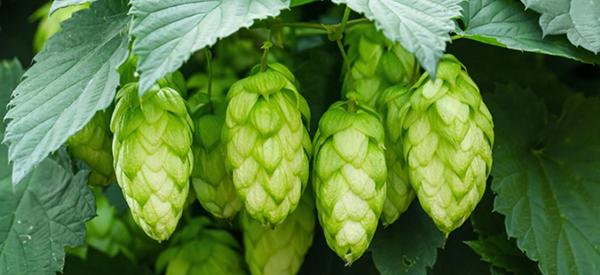
Hops
There are now a vast number of varieties of Hops, but this article focuses on the Common Hop (Humulus lupulus). Hops is a perennial climber and a dioecious plant meaning there are separate male and female plants. A plant that is in the right location, and is kept healthy, will produce hops for up to 20 years.
The actual hop or cone is borne by the female plant. As a result, only female plants are grown commercially. They also make a more attractive show in gardens and the hops can be harvested every season.
The most common use for hops is as part of the brewing process for both stabilizing and flavoring beer. However, it has also been used medicinally and as a flavoring in other beverages and even in foods for many centuries.
The History of Hops
The earliest use of hops in beer making is thought to date back to the 6th century. However, the first written records of hops being used in both brewing and in herbal remedies in Europe are from the 9th century.
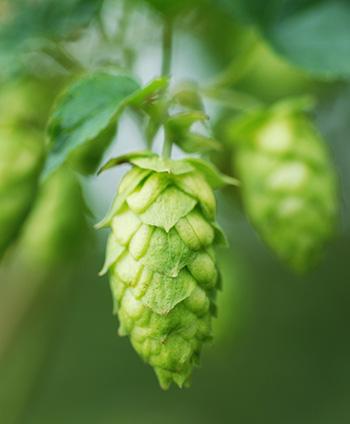
These early brewers noticed that beer made with hops was far less likely to spoil than those without. This pointed to hops having an antimicrobial and or an antibacterial quality.
Hops and the plants were introduced into the United Kingdom from Germany and France in the 16th century where they were also used in brewing and considered a “herbal” that was a tonic that also offered calming, sedative, and sleep-promoting properties. Hops was introduced into the US by Dutch and English settlers at the beginning of the 17th century.
This plant was only used as a garden climber in the 20th century and appears to be enjoying increased popularity now.
Where This Plant is Found
It is believed that Hops originated in South-East Asia. They now grow in multiple locations in the northern hemisphere. These plants can grow at altitudes of up to 4,900 feet / 1,500 meters.
Part of why this plant – and crop – has naturalized so well and so broadly is that it can tolerate a range of soil types and do not need a lot of summer heat.
Related: The Complete Map of Edible Plants: Find Out What You Have in Your Area! (Video)
How to Identify Hops
Like all creepers, H. lupulus needs some sort of structure to grow up. If it has support, this vine can reach heights of more than 16 feet / 5 meters.
To support the plant, and sustain its growth and health, it can send roots to an astounding depth of 12 feet / 3 ¾ meters.
- Leaf: The light green leaves of Common Hops are heart-shaped with deep veins and markedly serrated edges.

- Stem: The stems have reddish ridges and a slightly angular. There are short spines along the edge of these tough, twisting stalks that are thought to help the plant climb. Interestingly, the stalks always twine clockwise.

- Flower: Male and female flowers grow on male or female plants and look different. Although both are greenish-yellow in color and have a pale pink flush on the calyx and tip of the bud. However, the male flowers grow in loose groups or bunches.
The female blooms are catkins that have a cone shape when they open. They go on to form the familiar hop or cone. Male flowers do not form hops.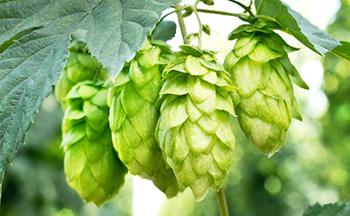
- Fruit/hop: The light-green hops hang from the vines on stalks on alternative sides of the stems. The cone consists of several layers of papery bracts that overlap. The hop turns brown when it is ripe and has a distinctive scent.
The dried hops are used for brewing and to make infusions and powders for medicinal purposes
There appears to be a growing number of people who do not use the hops for craft beer or even herbal remedies; they simply find them attractive garden creepers.
How to Grow Hops
In terms of general conditions, these plants like rich, well-drained soil (sand or clay) with a pH range of 6.5 to 7.5 (in other words, neutral to alkaline). They also require a lot of water and full sun to thrive and produce good hop crops. There are several factors to consider and act on when it comes to selection, planting, and care:
- If you want hops it is better if you purchase a female plant. If you have both male and female plants in your garden, it is best to remove the male flowers and your female plants will produce better hops if their flowers are not fertilized.
- Before you plant your hops climber you need to prepare the soil. If it is acidic you may need to add some lime. Also, work some all-purpose fertilizer into the soil to a depth of 6 – 8 inches / 15 – 20 centimeters. This will give the young plant a good boost and help it to fight off diseases and pests while it establishes itself. Each spring you will need to dig in some compost and give the plant a nitrogen feed.
 You must ensure that the Hops plant has a good structure to climb up. Plants grow vertically first – as high as the structure allows – and then spread laterally. There will be several shoots from the rhizome. Select the two or three strongest ones and then pinch off the others. Wind the shoots clockwise around the support (this is their natural growth direction). You need to keep an eye on the growth during the first week or so as a happy plant may grow 1 foot / 30 ½ centimeters a day and you need to train the shoots up the structure if they are not doing so naturally.
You must ensure that the Hops plant has a good structure to climb up. Plants grow vertically first – as high as the structure allows – and then spread laterally. There will be several shoots from the rhizome. Select the two or three strongest ones and then pinch off the others. Wind the shoots clockwise around the support (this is their natural growth direction). You need to keep an eye on the growth during the first week or so as a happy plant may grow 1 foot / 30 ½ centimeters a day and you need to train the shoots up the structure if they are not doing so naturally.
- These vigorous climbers require space to spread. So, if you are planting more than one, ensure each plant has enough space (7 feet / 2 meters) so they do not grow into each other as this can cause health issues. Also, they must be allowed to grow to the normal height for the species. Keeping them trimmed to under 10 feet / 3 meters will compromise shoot health.
- Hops needs a lot of water. Allow the top 2 inches / 5 centimeters of soil to dry out before you water. Then, water thoroughly and deeply.

- Pruning is an important part of care and is an ongoing activity because this is such a fast-growing plant. By cutting out less robust stems and removing foliage around the base, you prevent the plant from becoming too entangled and dense. This greatly reduces the chances of diseases and pests as air can circulate more freely. At the end of the growing season, the plant should be cut down to a height of 3 feet / 1-meter remains.
- As with any plant that is susceptible to pests and disease, you need to keep an eye on your Hops so that you notice problems early. These climbers can develop downy mildew and are enjoyed by several sucking insects such as spider mites and aphids and leaf-eaters like cutworm and beetles. There is a range of natural and chemical products available to deal with these once you have identified the problem.
While Hops vines may sound like a lot of work and not all that hardy, they are well worth the effort for both appearance and the hops they produce.
Get Your Own Medicinal Seeds, Last 30 Packs Left
How to Harvest This Plant
Harvesting involves the cones/hops only and should be done when the cone has become fragrant, dry, and papery. Cut or pinch the hops off, leaving the stalks intact.
What Hops is good for & the natural remedies made from it
There is extensive historical and anecdotal evidence for the medicinal value of Hops. Traditionally, the hops/cones have been used for:
- Anxiety
- Insomnia
Today they are also used for or to: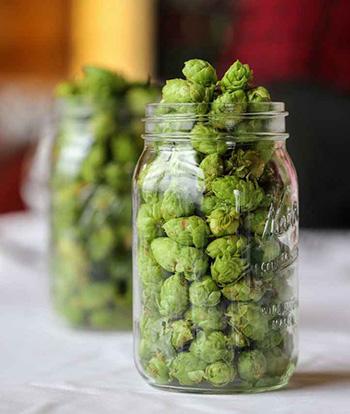
- Irregular or disturbed sleep patterns
- Stress and tension
- Hyperactivity
- Restlessness
- Indigestion and intestinal cramps
- Agitation and irritability
- Menopausal symptoms
- Improve urine flow
- Lower cholesterol levels
- Treat low-grade infections in the bladder or on the skin
- Boost appetite
- Improve body odor.
Even where early research is promising, it should be noted that there is little or no clinical evidence to support health claims. While there has been a little medical research done, it seems to primarily be on Hops when included with other ingredients in preparations.
This is to be weighed against anecdotal evidence of effectiveness and value.
What Parts of Common Hops Are Used in Remedies?
Unlike with many other plants, there is only one part that is commonly used: the hop. They can be used when they are fresh or dry to produce several herbal preparations including placing them inside pillows to promote sleep. The young shoots can be cooked like asparagus and used as a vegetable.
A DIY Hops recipe
Some people enjoy hops tea, and these fragrant cones can also be placed inside pillows. A good way, though, to make a hops remedy that you can use for months for a variety of issues is by making a tincture.
Ingredients
- Fresh or dried hops
- Vodka / flavorless grain alcohol with an alcohol content of more than 70%
Method
- Roughly chop the hops up into small pieces

- Place the hops in a glass jar, leaving 1 – 2 inches / 2 ½ – 3 cm at the top

- Pour in the alcohol until the hops are covered

- Mix the ingredients
- Add a weight (paperweight, a clean pebble, etc.) on top of the hops to keep the bulk of the plant material in the alcohol
- Place a lid on the jar

- Label the jar with the name of the contents and the date you made the tincture
- Store the jar in a dark, cool place for 3 – 4 months
- Strain the mixture and place the tincture into labeled dropper bottles.

This tincture is helpful against anxiety, problems sleeping, and poor digestion. You can take 20 – 30 drops 2 or 3 times a day but preferably take a single daily dose of 40 drops at night.
Dosage
The lack of clinical research makes it difficult to give clinical dosage information. Generally, how much one uses is determined by a wide range of factors including the user’s state of health and age, type of preparation being used, and the ailment or symptom being treated.
If you purchase a ready-made product, ensure that you only do so from a reputable health outlet and/or manufacturer and that you follow the directions on the packaging.
How to Preserve This Plant
Hops can be stored for extended periods although they do lose some potency over time. However, this is usually only an issue if you want to make beer! There are a few options:
- Drying: Once you have harvested hops, you can begin to process them. Even though they feel dry, the cones will not be completely dry, so you will need to complete the process. Spread the hops out on racks or suitable cloth and leave them in a well-ventilated and cool area away from direct sunlight. Once thoroughly dried, the cones become brittle to the touch and are ready to use or store in airtight containers.

- Refrigeration: Fresh hops can be refrigerated in airtight containers, but they should be used as quickly as possible. The shelf-life can be increased by vacuum packing the hops before refrigerating them.
- Freezing: For long-term storage, you should vacuum pack the hops and freeze them.
- Tincturing: Alcohol is an excellent preservative, so tincture usually remains usable for up to 18 months. See the recipe in an earlier section.
These options allow you to have access to hops beyond the summer months when your vines are bearing cones.
What Plants Resemble Hops?
Differentiating one species of hops from another can be tricky although differences in leaf shape and color are helpful. However, the variety of hop is more significant for people who want to use them for brewing beer than using hops in remedies. There seems to only be one other plant that might be mistaken for hops. Comparing them can help to avoid errors:
Feature
Common HopsHumulus lupulus
White / Red BryonyBryonia dioica
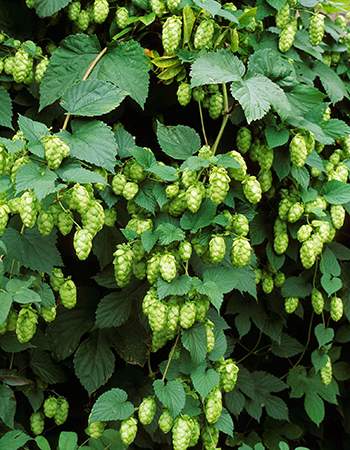
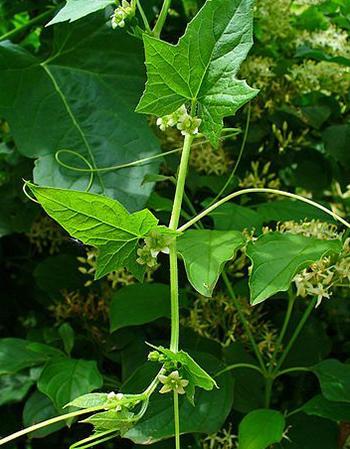
Size
Climber reaching 16 feet / 5 meters
Climber reaching 11 feet / 3 ½ meters
Leaves
Heart-shaped, toothed, arranged opposite, deeply veined
Five-lobed, alternate leaves, deeply veined, not serrated
Flowers
Separate male & female plants and flowers, greenish yellow with pink flush, female flowers are cone-shaped catkins, male flowers form loose bunches
Separate male & female plants and flowers, greenish white flowers with dark veins, female flowers in small clusters, male flowers on drooping stalks
Fruit
Green cones of papery bracts that turn brown when ripe
Green berries that turn red when ripe
Edible
Hop and new shoots
The whole plant is toxic!
A further plant that can cause confusion is Hop Trefoil (Trifolium campestre). If you look at the two plants, it is impossible to mistake Common Hops for Hop Trefoil or vice versa as they are different in every way other than the hop-shaped flower and fruit. The only reason they trip some people up is the fact that both plants have “Hop” in their common name.
Warning And Cautions
There are some cautions that are attached to Hops. The use of the cones in medicinal remedies should be avoided by:
- People with plant allergies
- Pregnant and breastfeeding women
- Individuals suffering from depression
- People taking sedatives
- Women with hormone-sensitive conditions and/or cancers
- Individuals taking estrogen medication.
As with any remedy, natural or otherwise, check with your healthcare practitioner before you start using hops, especially if you suffer from an existing medical condition and/or are on medication.
You may also like:
 30 Anti-Anxiety Remedies You Didn’t Know About
30 Anti-Anxiety Remedies You Didn’t Know About
1 Cup Before Bed Shrinks Belly Fat All Night (Video)
How to Make a Chaparral Salve for Wounds And Skin Infections








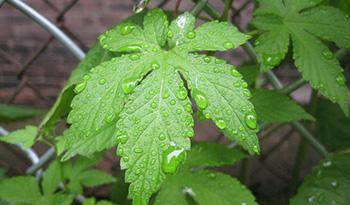
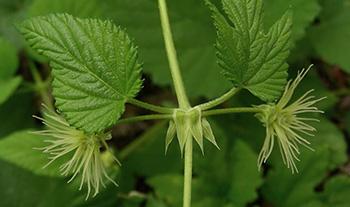
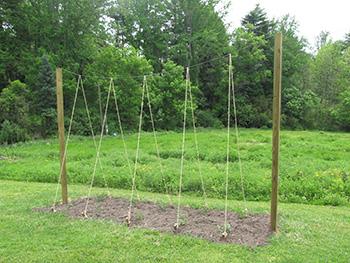 You must ensure that the Hops plant has a good structure to climb up. Plants grow vertically first – as high as the structure allows – and then spread laterally. There will be several shoots from the rhizome. Select the two or three strongest ones and then pinch off the others. Wind the shoots clockwise around the support (this is their natural growth direction). You need to keep an eye on the growth during the first week or so as a happy plant may grow 1 foot / 30 ½ centimeters a day and you need to train the shoots up the structure if they are not doing so naturally.
You must ensure that the Hops plant has a good structure to climb up. Plants grow vertically first – as high as the structure allows – and then spread laterally. There will be several shoots from the rhizome. Select the two or three strongest ones and then pinch off the others. Wind the shoots clockwise around the support (this is their natural growth direction). You need to keep an eye on the growth during the first week or so as a happy plant may grow 1 foot / 30 ½ centimeters a day and you need to train the shoots up the structure if they are not doing so naturally.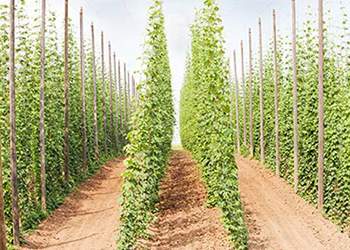
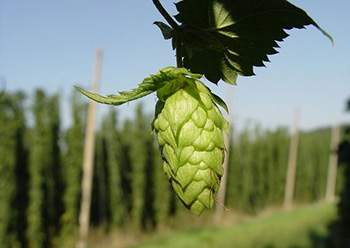
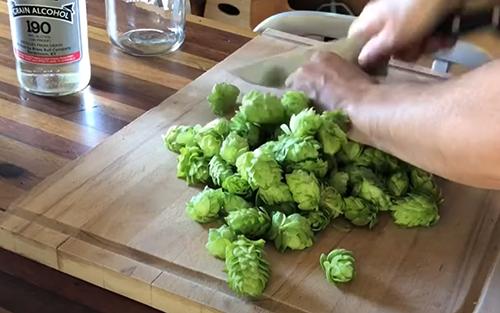
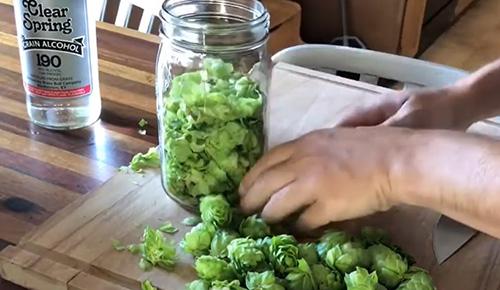
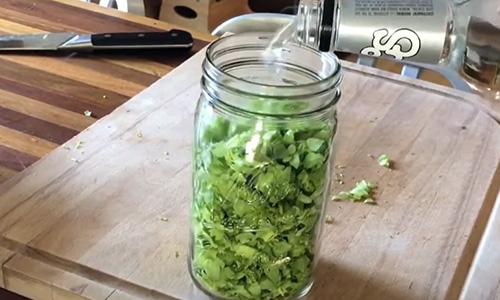
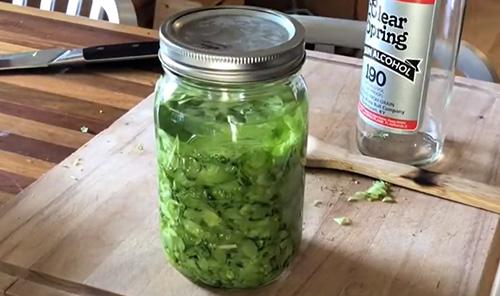

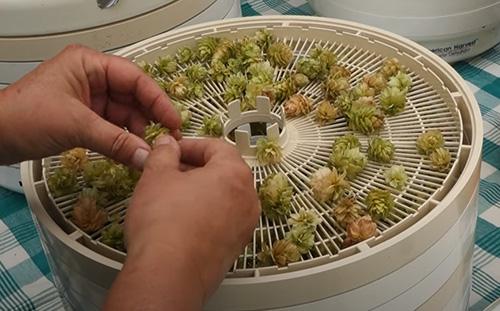
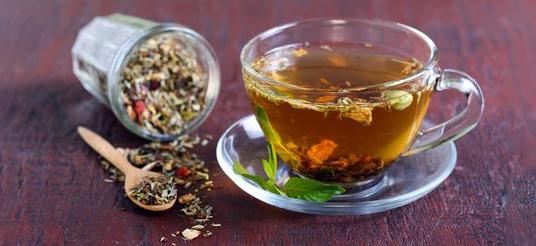
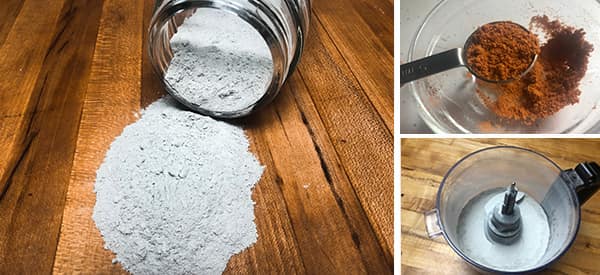
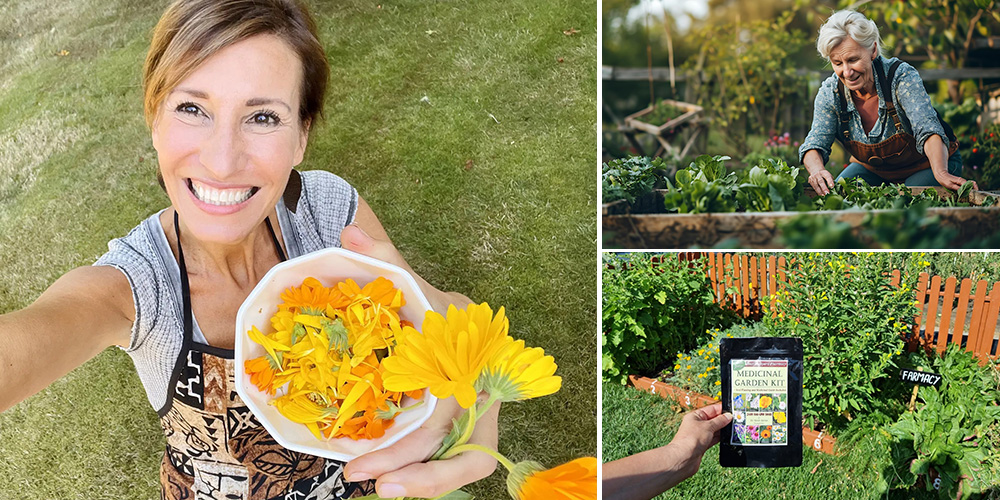
Thank you for that wonderful article. I have hops growing in my backyard and I have never really known what to do with them . Curious if this plant is used for anxiety why is it not recommended to give to people with depression? And also why is it not recommended to give for people taking hormone replacement?
Thank you for the wonderful article. I have hops growing in my backyard and I have never really known what to use them for Thank you for the wonderful article. I have hops growing in my backyard and I have never really known what to use them for. I am curious however if they are used to treat anxiety Then why is it not recommended to give to persons with depression symptoms? And also why is it not recommended to give two persons taking hormone replacement? Thank you
Hi Jacque,
Thank you so much for your comment.
Hops may exacerbate depression. It’s recommended that people with depression not use hops. However, if it is used for sleeping problems, restlessness, stress, and mild anxiety it’s ok. Hops, with its natural sedative effects, can increase sleep time. Hops also help to lower body temperature—falling core body temperature is one important physiological step toward sleep. Hops has also been shown to reinforce the body’s daily biorhythms of rest and activity.
Hops appear to work most effectively for sleep when it is used in conjunction with valerian.
When in doubt, check it out. If you’re unsure of your health status speak with your doctor or local herbalist before.
God bless!
What non-alcoholic drinks can be made with hops?